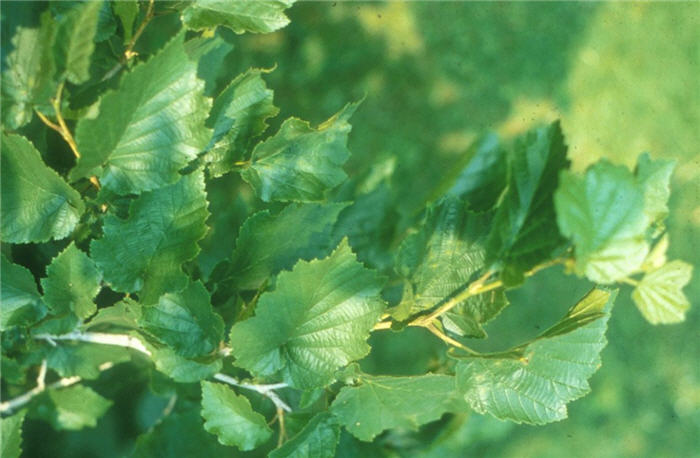| Botanical Name: Corylus colurna | |
| Common Name: Turkish Filbert |

-
Anatomy
-
Culture
-
Design
Plant Type
Tree, Shrub
Height Range
25-40'
Flower Color
n/a
Flower Season
n/a
Leaf Color
Dark Green
Bark Color
Brown, Grey, Tan
Fruit Color
Brown
Fruit Season
Summer
Sun
Full, Half
Water
Medium
Growth Rate
Moderate
Soil Type
Clay, Loam, Rocky, Unparticular
Soil Condition
Average, Rich, Poor, Well-drained, Moist, Dry
Soil pH
Acid, Neutral, Basic
Adverse Factors
n/a
Design Styles
Formal, Mediterranean, Ranch, Woodland
Accenting Features
Silhouette
Seasonal Interest
Winter, Spring, Summer
Location Uses
Background, Shrub Border, Patio, Walls / Fences
Special Uses
Screen, Shade Tree
Attracts Wildlife
n/a
Information by: Stephanie Duer
Photographer: JJ Neilson Arboretum
Photographer: JJ Neilson Arboretum
-
Description
-
Notes
Turkish Hazel is a deciduous tree with a pyramidal in form growing about 20 to 30 feet tall and wide. It has corky, mottled, tan to gray bark on mature trunks that may flake to reveal an orange-brown inner bark. Leaves are similar to birch, and have a yellow fall color. Spring catkins are followed by edible nuts that ripen in the summer (though this species does not produce the nut that is commercially available).
Grow in acidic, organically rich, medium moisture, well-drained soils in full sun to part shade. Best in full sun. Tolerates average soils, but not unamended heavy clays. Newly planted trees need consistent moisture. Once established in the landscape, trees are tolerate drought. Suckering may occur, and can either be managed through pruning, or allowed to grow for an attactive thicket. Generally tolerant of urban conditions.